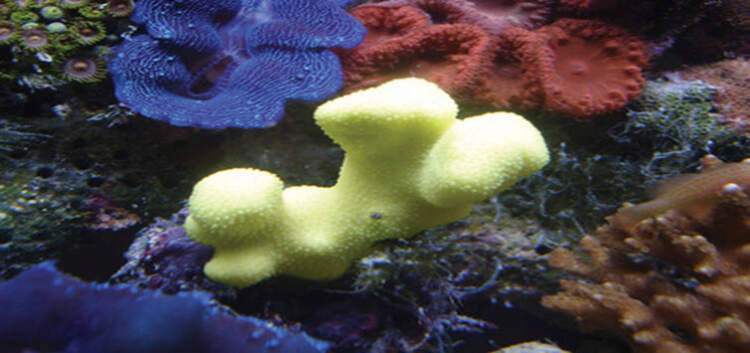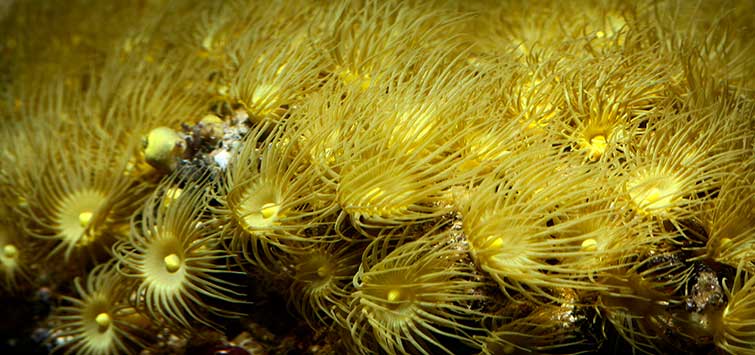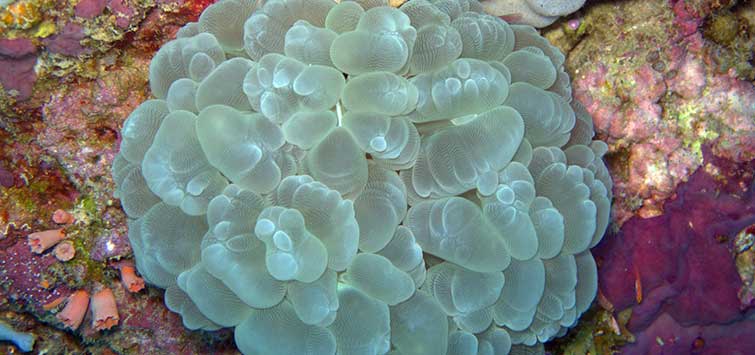Porites cylindrica
Author: Bob Goemans
Common Names: Yellow cylindrical coral, yellow finger coral, jeweled finger coral, cylindrical porous coral
Phylum: Cnidaria
Class: Anthozoa
Order: Scleractinia
Family: Poritidae
Range: Tropical Western Pacific Ocean and Indo-West Pacific regions
Natural Environment: In the above-mentioned areas this is a commonly found photosynthetic and phytoplankton-feeding branching, column, or finger-shaped stony coral. It is found in shallow waters on upper reef slopes, lagoons, and back reef margins receiving strong water movement.
Water Requirements: Calcium 380 to 430 ppm, alkalinity 3.5 meq/l, pH 8.1 to 8.2, specific gravity 1.024 to 1.026, and a temperature range of 74° to 83°F (23° to 28°C).
Captive Care
Placement of this coral in the aquarium should be similar to the conditions where it is found in the wild. In fact, it is a must if this species is to thrive! If not located in areas where there is direct, somewhat strong water movement and intense light, this coral will coat with detritus, polyps will not extend, and it will slowly dissipate. Its bright yellow color is an indicator that it requires a strongly lit location,
Feeding the aquarium every other day with a phytoplankton additive appears to speed growth and ensures its stability. However, be sure its tiny polyps are visible before feeding.
This is a hardy, fairly disease resistant coral, and it is somewhat common in the trade, yet only maintainable under the above-mentioned conditions. Calcium and alkalinity parameters are also very important, therefore test often and and meet the water quality requirements.
Notes
As with all species in this genus, they occasionally shed a thin waxy surface layer of mucus to rid themselves of various waste products and algae. This is a normal occurrence, especially if the specimen is placed where water movement is inadequate.
There is also a small, yellowish-white nudibranch, Phestilla lugubris, that feeds upon Porites corals. Should you discover discolored patches of polyps, or its tiny polyp tentacles not extended for any unusual periods of time, look closely for this tiny nudibranch and remove if found.

.png?h=595&iar=0&w=2781&hash=5FD5E69473BCC22199FBFA2FB71B6033)



